Abstract
The behavior of a number of motile flagellated bacteria toward viscosity characteristics of their fluid environments was observed. All showed an increase in velocity (micrometers per second) in more viscous solutions. Velocity reached a maximum at a characteristic value, however, and thereafter decreased with higher viscosities. Peritrichously flagellated bacteria had maximum velocities at higher viscosities than polarly flagellated bacteria. Effects of temperature, and possible utilization of chemical constituents in the viscous solutions, were studied and found to be negligible factors under the experimental conditions used. Different agents produced the same phenomenon, thus indicating that there probably were no chemically induced metabolic effects. Loss of available water and the possibility of a variable energy supply to the flagellar propulsive system were considered but are believed minimal. Theoretically derived thermodynamic equations were utilized and suggest that the conformation of the flagellar helix affects efficiency of propulsion. Such a relationship between helix waveform and velocity was experimentally observed with Thiospirillum jenese.
Full text
PDF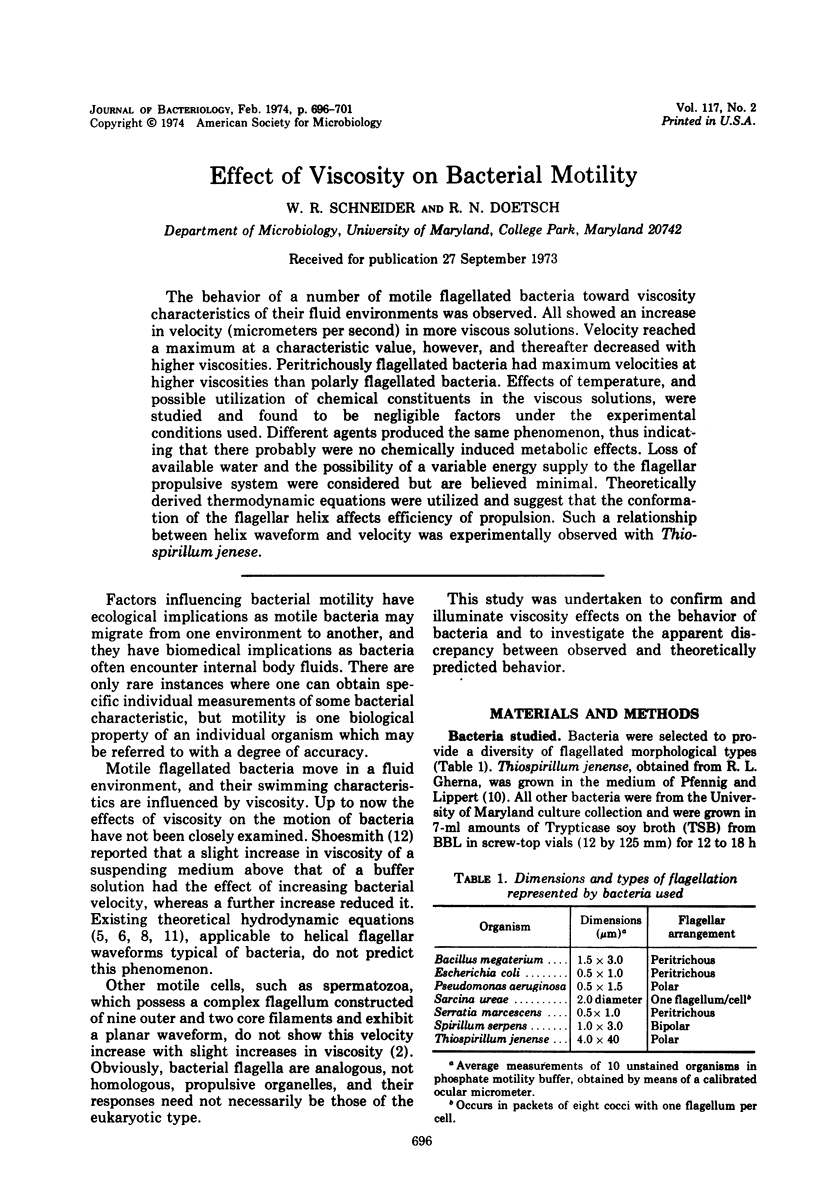
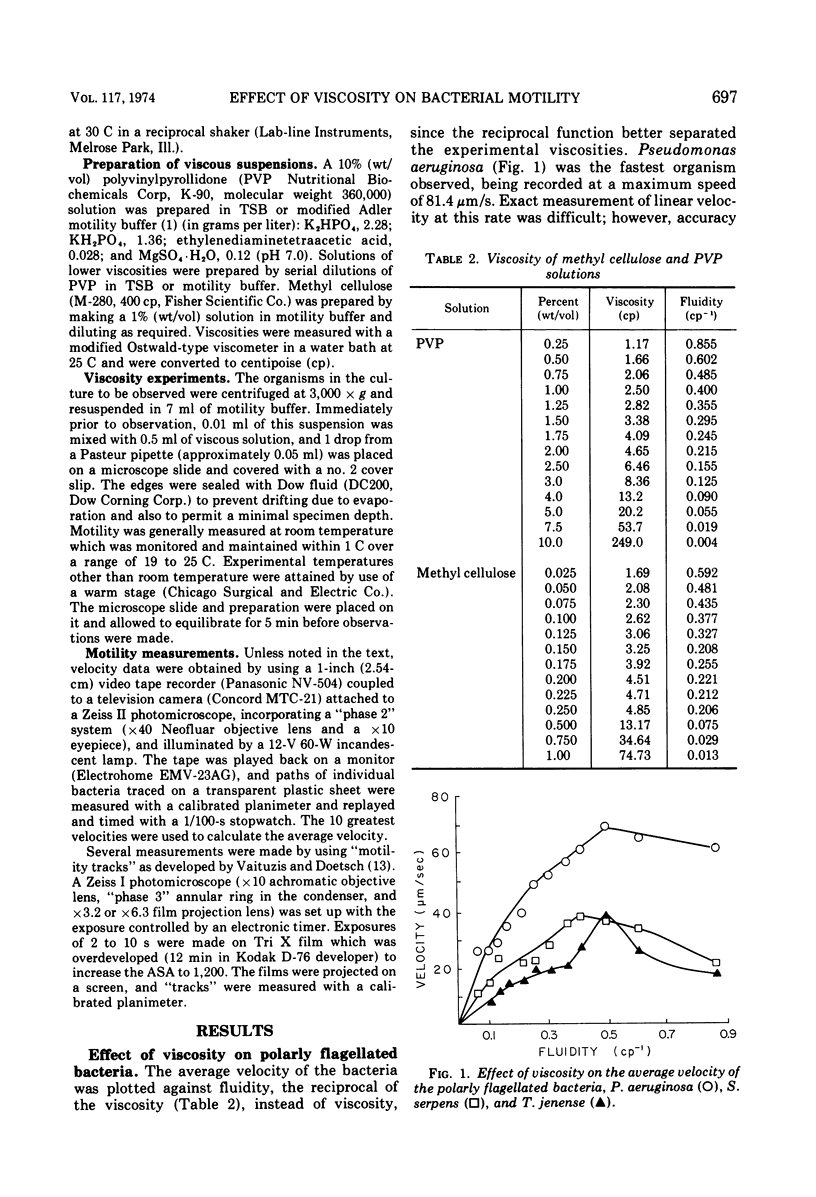
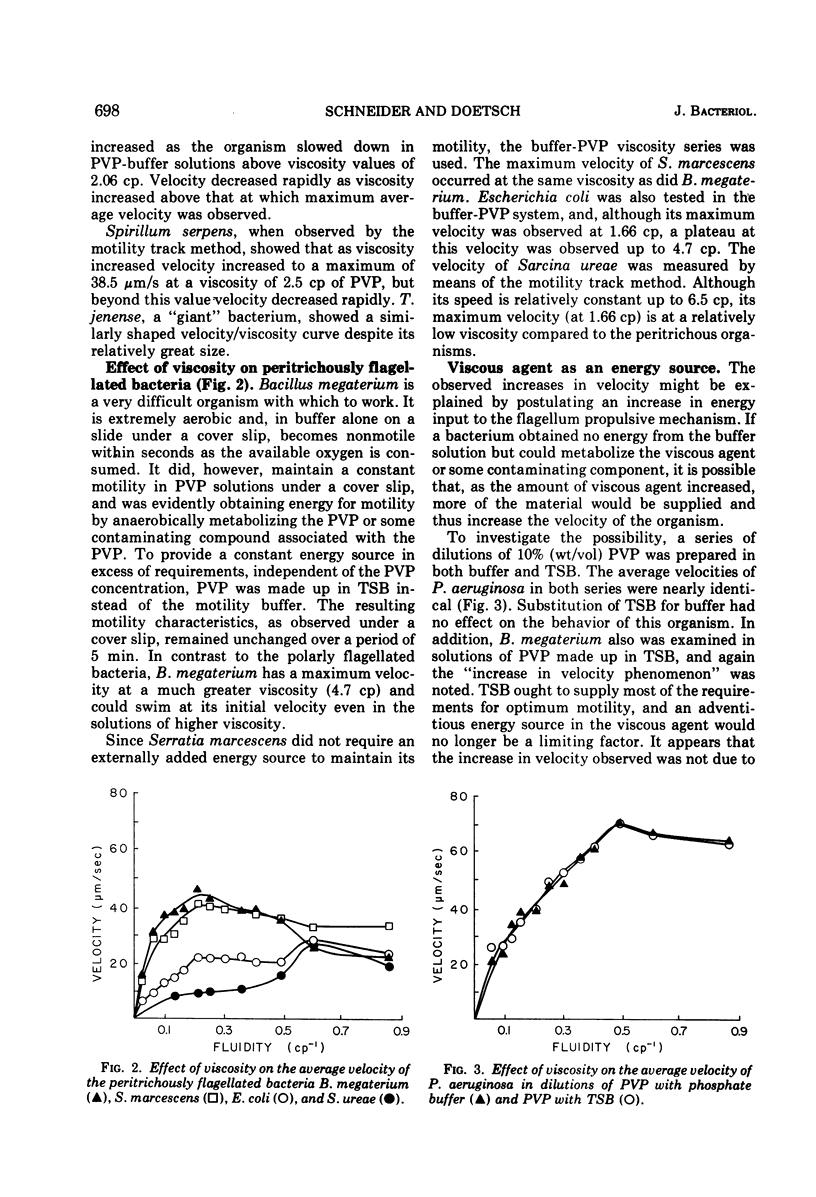
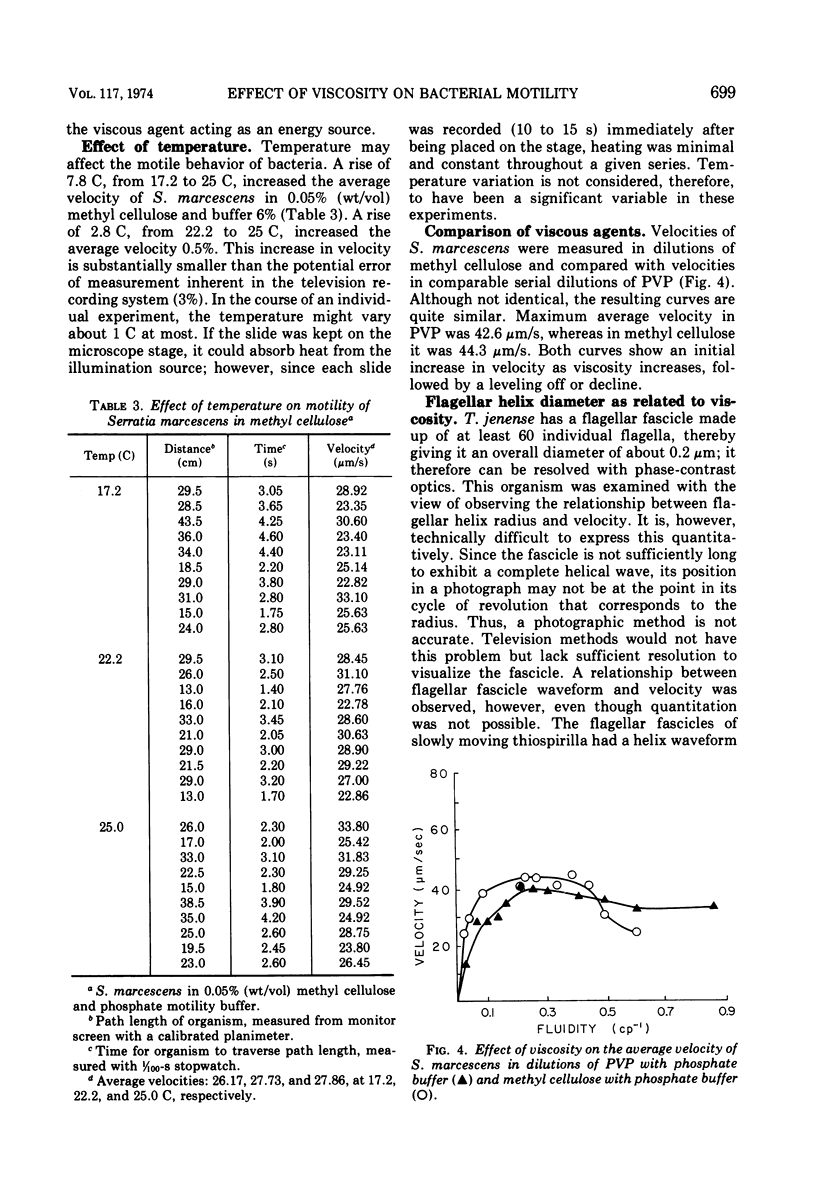
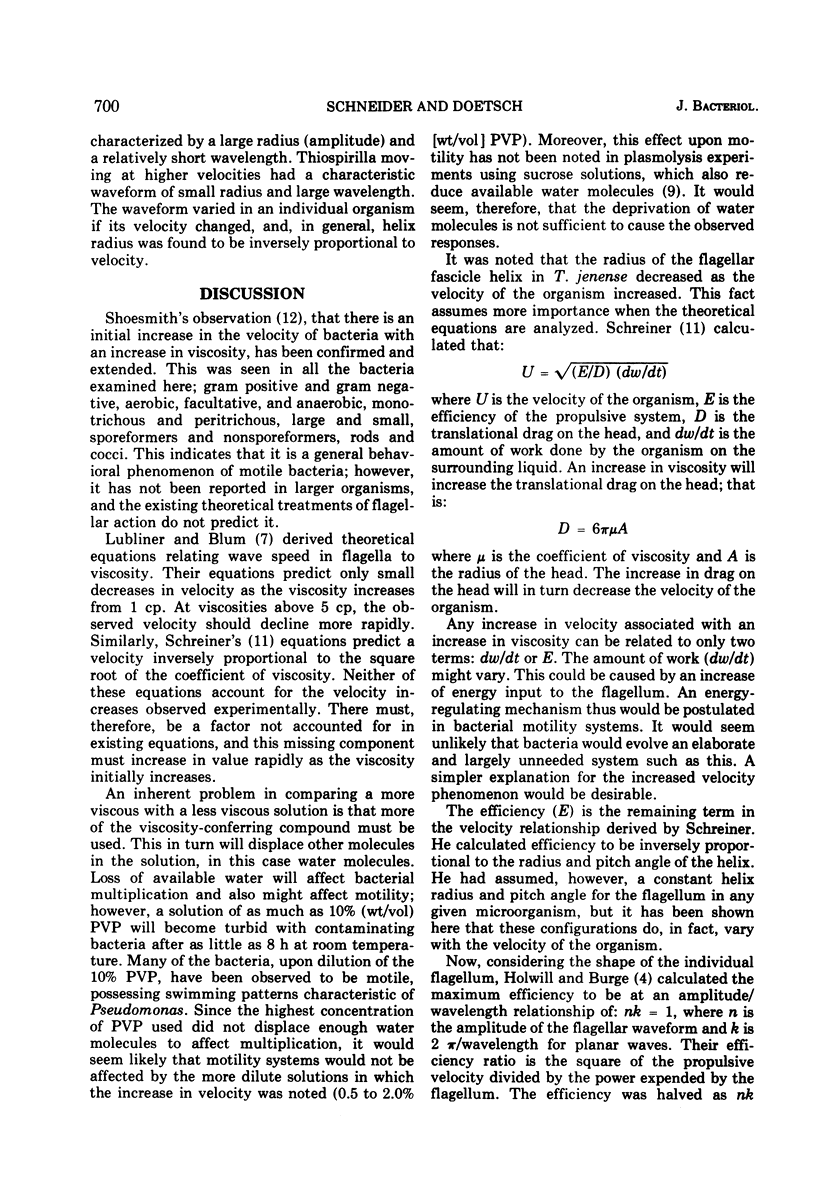
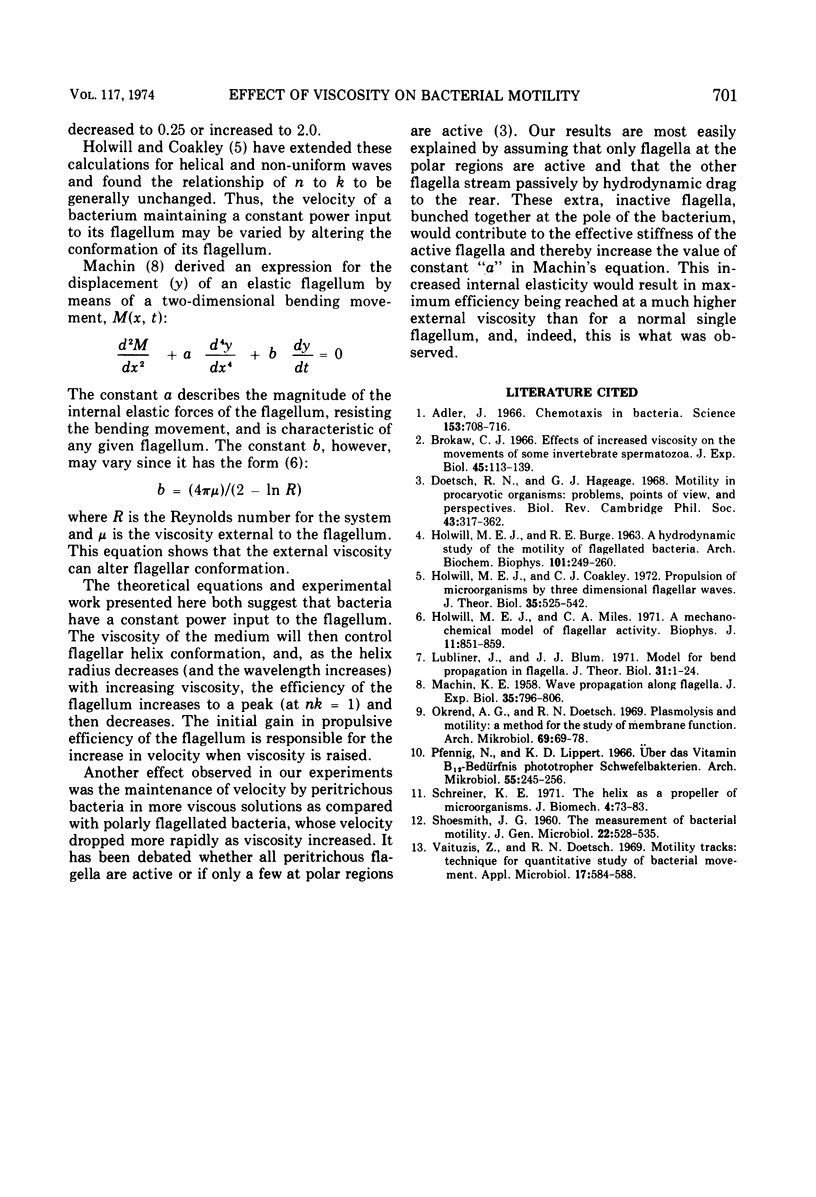
Selected References
These references are in PubMed. This may not be the complete list of references from this article.
- Adler J. Chemotaxis in bacteria. Science. 1966 Aug 12;153(3737):708–716. doi: 10.1126/science.153.3737.708. [DOI] [PubMed] [Google Scholar]
- Brokaw C. J. Effects of increased viscosity on the movements of some invertebrate spermatozoa. J Exp Biol. 1966 Aug;45(1):113–139. doi: 10.1242/jeb.45.1.113. [DOI] [PubMed] [Google Scholar]
- Coakley C. J., Holwill M. E. Propulsion of micro-organisms by three-dimensional flagellar waves. J Theor Biol. 1972 Jun;35(3):525–542. doi: 10.1016/0022-5193(72)90149-x. [DOI] [PubMed] [Google Scholar]
- Doetsch R. N., Hageage G. J. Motility in procaryotic organisms: problems, points of view, and perspectives. Biol Rev Camb Philos Soc. 1968 Aug;43(3):317–362. doi: 10.1111/j.1469-185x.1968.tb00963.x. [DOI] [PubMed] [Google Scholar]
- HOLWILL M. E., BURGE R. E. A hydrodynamic study of the motility of flagellated bacteria. Arch Biochem Biophys. 1963 May;101:249–260. doi: 10.1016/s0003-9861(63)80010-7. [DOI] [PubMed] [Google Scholar]
- Lubliner J., Blum J. J. Model for bend propagation in flagella. J Theor Biol. 1971 Apr;31(1):1–24. doi: 10.1016/0022-5193(71)90117-2. [DOI] [PubMed] [Google Scholar]
- Miles C. A., Holwill M. E. A mechanochemical model of flagellar activity. Biophys J. 1971 Nov;11(11):851–859. doi: 10.1016/S0006-3495(71)86259-8. [DOI] [PMC free article] [PubMed] [Google Scholar]
- Okrend A. G., Doetsch R. N. Plasmolysis and bacterial motility: a method for the study of membrane function. Arch Mikrobiol. 1969;69(1):69–78. doi: 10.1007/BF00408565. [DOI] [PubMed] [Google Scholar]
- Schreiner K. E. The helix as propeller of microorganisms. J Biomech. 1971 Jan;4(1):73–83. doi: 10.1016/0021-9290(71)90017-0. [DOI] [PubMed] [Google Scholar]
- Vaituzis Z., Doetsch R. N. Motility tracks: technique for quantitative study of bacterial movement. Appl Microbiol. 1969 Apr;17(4):584–588. doi: 10.1128/am.17.4.584-588.1969. [DOI] [PMC free article] [PubMed] [Google Scholar]


